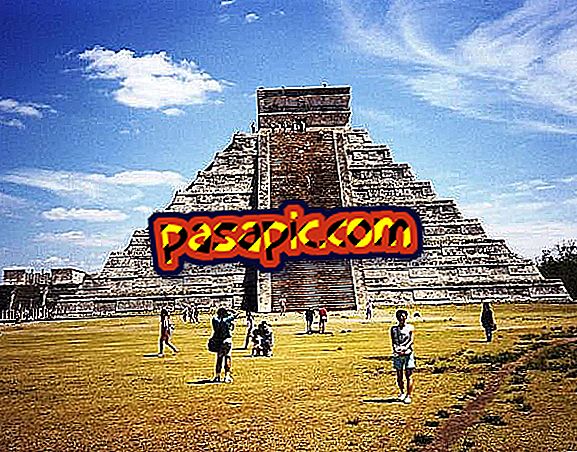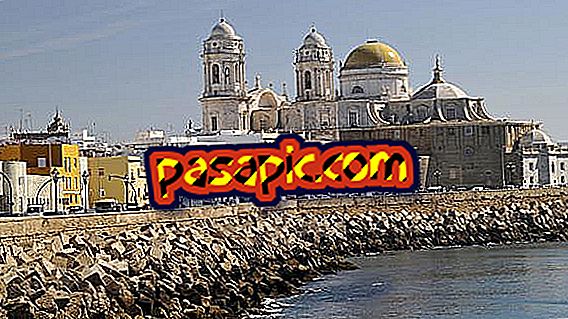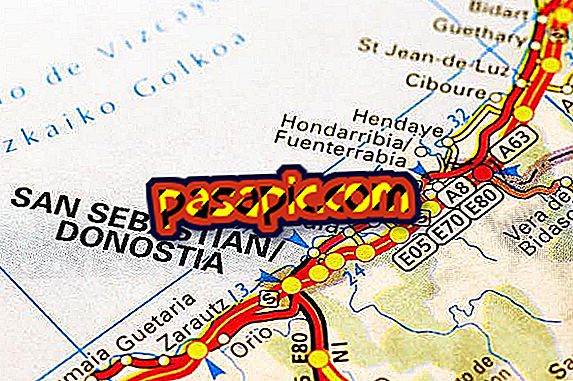How San Juan is celebrated

On June 24, according to the Christian calendar, the festival of San Juan Bautista is celebrated, although the majority of celebrations that take place around this date come from ancestral and pagan rites . These ancient ceremonies were linked to the summer solstice, which takes place between June 20 and 21, when the Sun reaches its highest point. This celebration has always been related to fire and bonfires, something that still exists today and, although the date varies, there are many places where the celebration of San Juan takes a great importance and is celebrated in style. So you can celebrate it too, in .com we tell you how San Juan is celebrated .
Balearic Islands
One of the most celebrated celebrations and known during this date are those that take place in various cities and towns of the Balearic Islands . We can highlight La nit de Sant Joan (The night of San Juan, in Catalan) of Calvià, Deià, Muro, Felanitx, Son Servera, Sant Joan, Formentera, Eivissa capital, Santa Eulàlia des Riu and Sant Joan de Labritja. On the night of June 23, bonfires are organized in the squares and everyone goes out into the street, gets carried away by the rhythm of the music and drinks "pomada" (Gin de Menorca with lemonade). The magic hour is twelve o'clock, the moment to join the ritual of purification by means of fire. According to tradition, something old must be thrown into the fire or a paper where we have written everything we would like to change. While burning in the flames, we take three jumps in a row.
But what stands out most in these islands is the horse show in Ciutadella (Menorca), since on the 24th the huge square of this town is filled with people to see the caixers, expert riders dressed in black and white, who pass by among the crowd demonstrating their skills and making the horses jump to the rhythm of the typical songs of these parties.

Valencian Community
The festival of San Juan in the Valencian Community and especially in Alicante is another of the most famous in Spain. For several days, the town of Alicante celebrates a great tribute to the fire with the " Bonfires of Alicante ", sisters of the Valencian Fallas.
The festivities officially start on June 20, with the placement of monumental "bonfires" on the streets with huge cardboard and wooden figures, and "barracas" in the fairgrounds, where popular festivals are held and the typical brevas and cocas, a kind of empanada of tuna, onion and pine nuts. On June 21, there is a parade of music bands and commissions, with their respective "beauties" and bridesmaids dressed in traditional costumes. On the next day, the wreath is given to the patron saint of the city, the Virgen del Remedio; and on the 23rd the international folkloric parade is celebrated, a colorful cavalcade in which dance groups from all over the world participate.
In addition, every day from 20 to 24 June at two in the afternoon, " mascletás ", traditional and noisy pyrotechnic shows are performed. And it is at midnight on June 24 when the " cremá " arrives, the peak moment. The "bonfires" scattered throughout the city burn with joy, dancing and singing, at the same time that the firemen throw water to the assistants in what is known as the "banyá". From the 25th until the 29th, the fireworks competition takes place on Postiguet beach, while the old town center is animated by the medieval market and its different shows.

Catalonia
In this region, the " revetles of Sant Joan " (San Juan festivals) are very common during the night of June 23, with the pertinent bonfires made with furniture and old junk during the previous days and a "ninot" or doll in the top (although much smaller than the Alicante). When the sun sets, to start the party the fire is set to fire with "the flame of the Canigó", fire made every June 23 on the top of Canigó and distributed throughout the Catalan territory.
The verbena usually begins with an outdoor dinner with family and friends, and in each neighborhood or town there is usually an orchestra that encourages the night. At dinner, the coca of Sant Joan is traditional as a dessert and the appropriate champagne toast. Neither can miss the rockets and firecrackers, children and adults throw during this night, but always taking the appropriate security measures. Likewise, festivals and parties are also organized on the beaches of the Catalan coast, where water, fire and music come together until the sun rises.

Galicia
The Galician territory is another one that welcomes traditional celebrations of San Xoan during the night of June 23 to 24, in the well-known Noite Meiga, a celebration full of magic in which the meigas (witches) are invoked that "habeilas, hailas "(there are, there are).
The ancestral tradition says that tonight, to protect itself from the flight of witches in all parts of Galicia, a bonfire is lit as a purifying and protective symbol. It is the fire so that once embers are made, all present fire the bonfire to the cry of "Bruxas fora" in order to ward off the evils that may come. All gathered around the fire, is sung, danced, eaten and drunk in order to drive away evil spirits. In this afternoon and evening you can not miss the grilled sardines, chorizos, churrasco, cachelos (baked potatoes with their skin, which is later removed), wine and brandy or " queimada ", magic potion with fruit and lots of sugar that burns in a pot and a spell is recited during its preparation.
The most popular celebrations of the San Juan in Galicia are: the feast of San Juan in A Coruña, on the beaches of Riazor and Orzán and which is declared a holiday of national tourist interest.

Canary Islands
The festival of San Juan also takes a great importance in the Canarian archipelago during the night of June 23, especially in Las Palmas de Gran Canaria because the city was founded on the day of San Juan in 1478 and usually has planned events to celebrate all the week. Bonfires take to the streets and beaches, parties and open-air concerts are organized and fireworks light up the sky.
In Puerto de la Cruz (Tenerife), on the morning of June 24, goat herds come to the fishing pier for a traditional swim in the sea.

Other places
Although the above are the best known and celebrated celebrations, festivities are organized throughout the Spanish geography around the festival of San Juan and the summer solstice. For example, among many others, in Asturias tonight it receives the traditional name of " Nueche de San Xuan " and in it they burn "les fogueres"; in Cantabria people jump over bonfires, step on the ashes and dance around them, making requests; or of Castile and León highlights the Night of San Juan de Soria, also known as the feast of the Mother of God, declared of national tourist interest and in which the bulls have a special role.
In other countries San Juan is also celebrated as, for example, in Portugal, where we can highlight the celebrations of Oporto .

- It preserves the traditions and celebrates San Juan as it has been done for centuries.


